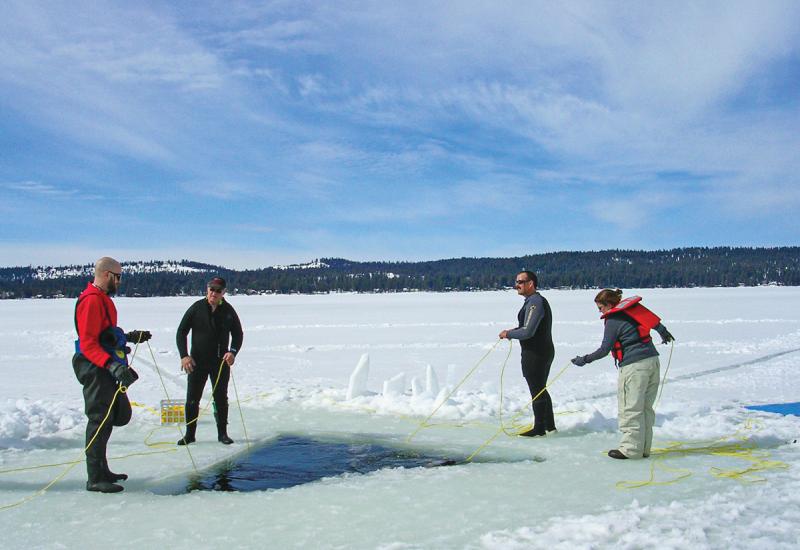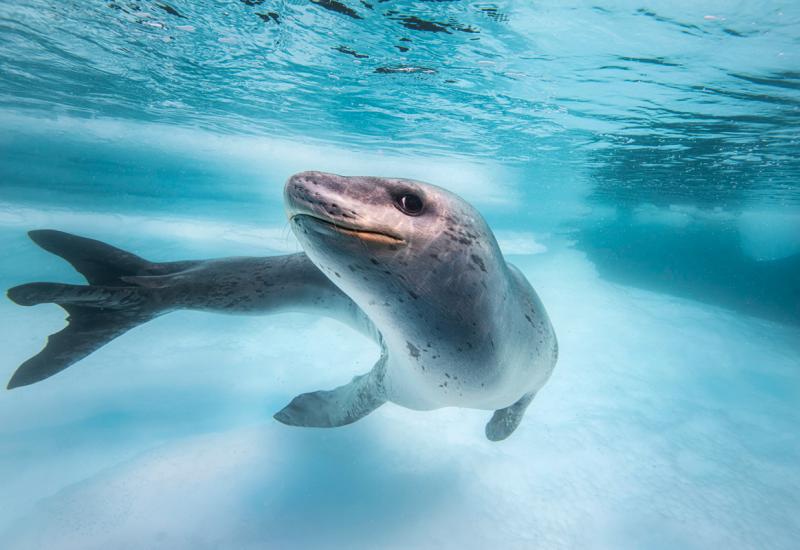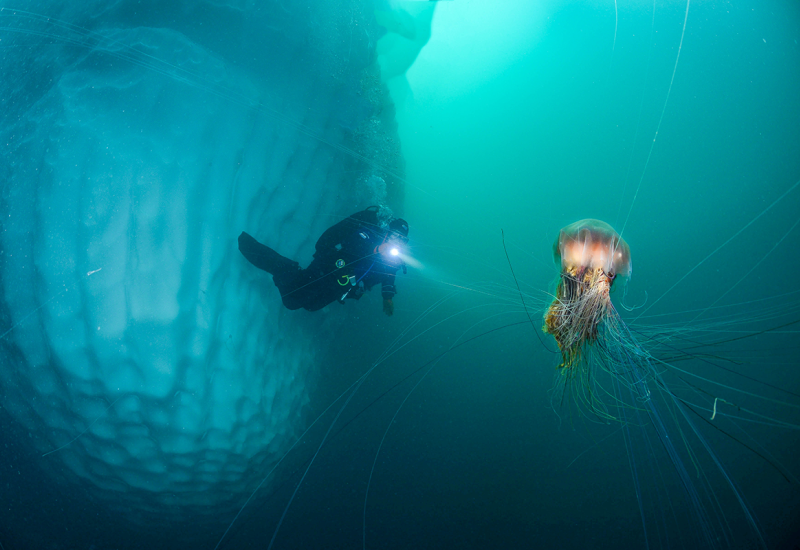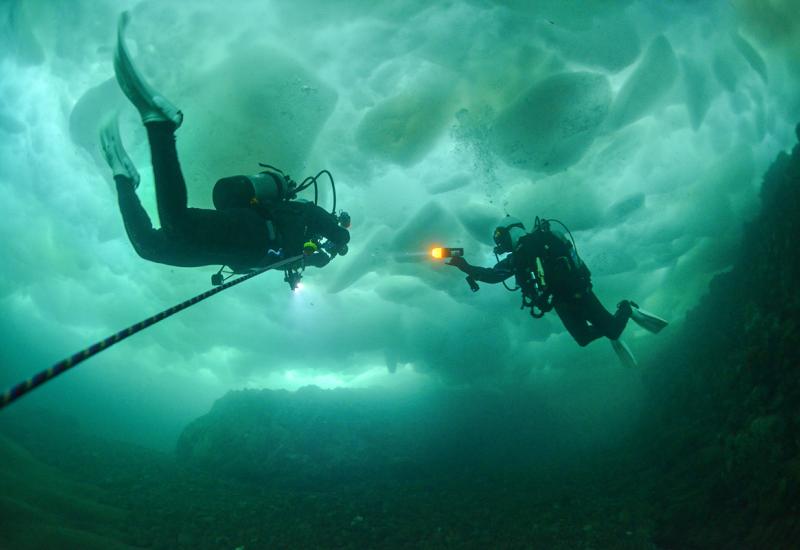VIDEO: What It's Like to Freedive a Glacier—Without a Wetsuit
This project was a visual metaphor for the invisible battles many of us hide below the surface, away from our friends, family members, and even ourselves at times. It’s about facing them head-on and finding the strength to do that. That’s why I didn't want to go in a wetsuit. I wanted it to feel as vulnerable as possible.
This was inspired by my own mental health struggles. I've had anxiety my whole life, but I never had the courage to share it with anyone. I felt like I would be weak if I asked for help. So I kept it hidden below the surface. Then I did some further research and found I wasn’t alone: 49% of men don't feel comfortable talking about their mental health, and 80% of suicides are men. I decided to change that. I designed this project to raise awareness and funds for men’s mental health for Movember, the nonprofit behind no-shave-November that raises money for men’s health and suicide prevention.
When I started the project, I had no clue how to swim. I teamed up with Luca Malaguti, Canada's deepest free diver, who felt really passionately about the project. I trained in Dominica with him for a month, where he taught me how to freedive, how to swim, how to hold my breath for three minutes, how to dive down to 70 feet, equalization, all of the basics. The rest of the core crew included world-renowned underwater cinematographer Daan Verhoeven, Canadian filmmaker Brian Hockenstein, and Tim Emmett, one of the best ice climbers in Canada who handled ice climbing safety for the shot where I jumped off the glacier.
I started cold-water training long before Dominica. I got into the Wim Hof Method about two years ago and found it super beneficial. Cold-water therapy has been great for my anxiety, depression. Over the winter at home in Connecticut, I went pretty crazy with it; I was doing 10 to 30 minutes of cold-water therapy basically every day. I thought that that would well prepare me for the waters in Greenland. But when we arrived, the water was 28°F there. I had been training in 33°F of water temperature, and those five degrees made a huge difference.
I had felt pretty confident leading up to that first jump in the water. It was the second when I went underwater that I noticed just how cold it was. I struggled to hold my breath for even 15 seconds, and I was in the water for only two minutes. Hypothermia started to set in the second I got back on the boat. At that point, I started to freak out— the water was too cold and I wasn’t going to complete the project.
On the second morning, Luca reminded me why I was doing it all. I really focused on the higher purpose of bringing men's mental health to the surface. We worked on calming and warming breathing techniques, which I would do on the paddleboard before I actually got into the water. Luca told me I’m in the water and the extreme pain from the cold comes, just wait another three or four seconds and if I'm still able to equalize, keep descending. So I did that. The first 20 seconds or so in the water was insanely painful. But after that, the cold started to disappear. The urge to breathe started to disappear. I think the dive time on that round was probably a minute and a half, which was like the first dive where we were like, ‘Oh, this project could actually get done.’
Believe it or not, I felt super calm like in the shot where I'm at the bottom of the iceberg. That was surprising even to me. I was able to kind of just sit there at the bottom for 20 to 30 seconds.
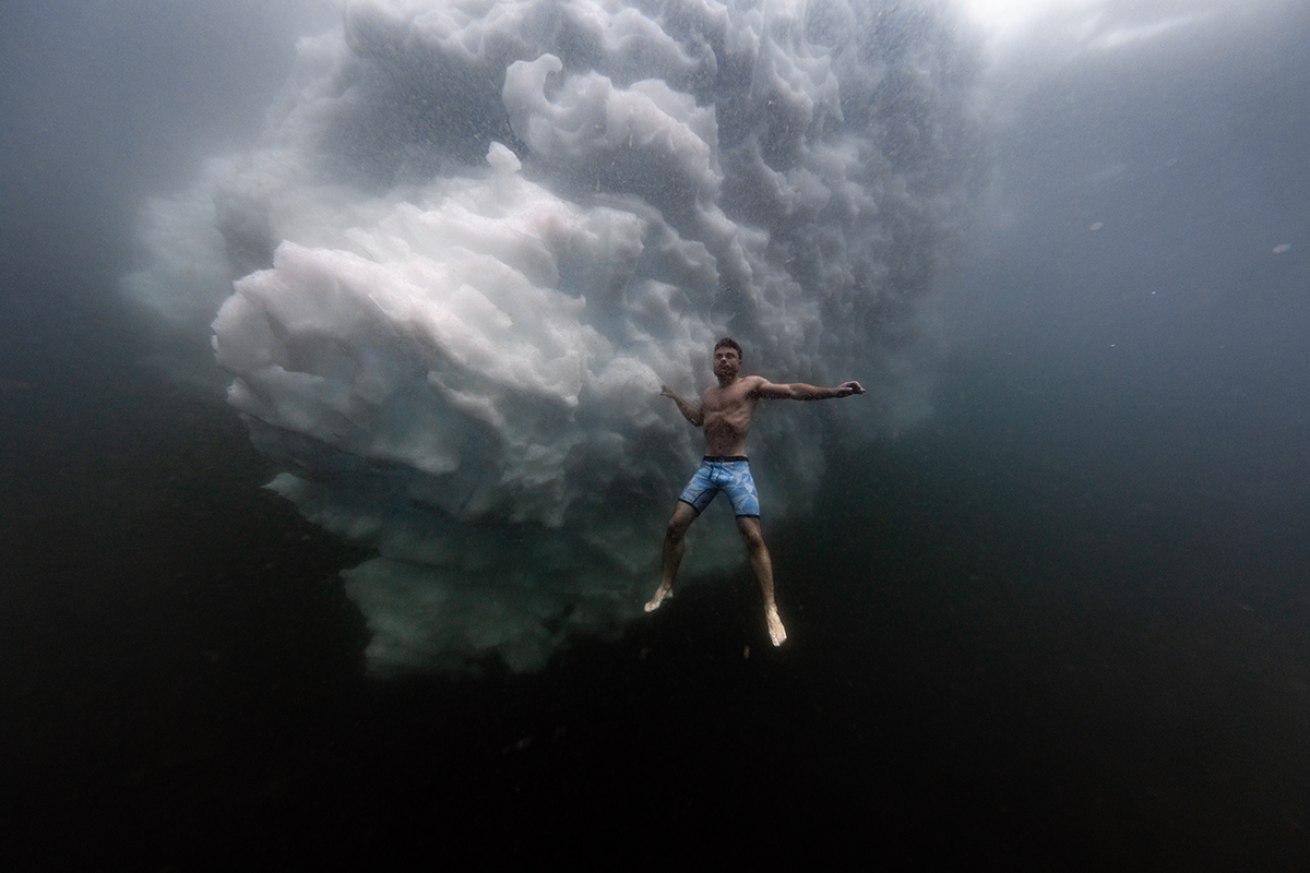
Courtesy ImageInstead of a wetsuit, Luke teamed up with Sheath Underwear to create an exclusive Iceberg design, with 25% of proceeds supporting men's mental health awareness.
That was a pretty incredible experience, almost a spiritual experience. I would take off the mask I’d worn down and hand it to Luca, who was nearby with the other safety divers. And I would turn to face the iceberg. All I would see is pitch black around the iceberg and this big white object in front of me. It was reflecting the light in all of these cool ways. And even though I didn't have a mask, I could make out the features of the ice perfectly, and know exactly where I had to go on it.
It was just like pretty incredible to be able to grab onto the iceberg. The ice actually felt warmer than the actual water. I almost wanted to spend more time below just because of how beautiful, beautiful it was.
I could definitely feel there was an iceberg on top of me, and at that moment I was basically living the emotions of the character. I had the weight of the world on my shoulders—but when I'm underneath it, I'm actually moving the iceberg very slightly. I could feel that movement. I could feel that it wasn't a solid object attached to anything. We had to be careful not to move it too much or apply too much force to it, because there was a risk for them to flip. Our boat captain was adamant about checking to see which glaciers were safe and which ones were not. But being underneath was one of the most incredible experiences in my life.
After that we realized finishing the video was possible. It was gonna be hard work, but the project would work. We were there for a week, doing anywhere from six to eight dives a day to get the 24 shots we needed. In between each dive, I would do like 20 sit-ups and push-ups in an Everest suit and drink a mug of Turmeric tea to warm up.
The resilience it took will be what sticks with me the longest. This was something super hard, nearly impossible. A lot of people that I told the idea to originally believed it was impossible. I started to believe it was impossible. But we pulled it together. What also stood out to me was accepting when things are out of my control and to be present in the moment. For every dive, after those 20 seconds of pain, I was more present than I felt in a long time.
The main thing I want is for people to see the visual and start the conversation about men's mental health. It’s a rarely talked about cause. We want people to see it and realize they are more capable than they realize, that they have an inner strength. We want people to feel like they can tackle the invisible battles they keep hidden below the surface. They don't have to succumb to them.
Visit Movember.com to support Adams’ fundraiser.

